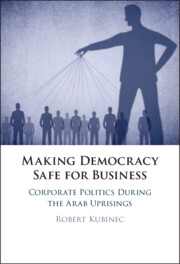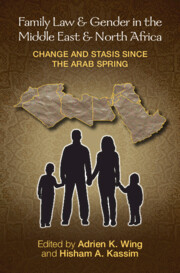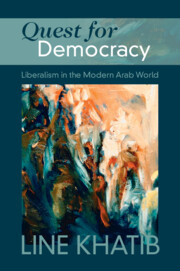89 results
6 - Aging Out?
- from Part III - Political
-
- Book:
- Encounters with Islam
- Published online:
- 09 September 2023
- Print publication:
- 14 September 2023, pp 106-131
-
- Chapter
- Export citation
7 - Threatening Citizens with Repression
-
- Book:
- Propaganda in Autocracies
- Published online:
- 18 July 2023
- Print publication:
- 14 September 2023, pp 289-334
-
- Chapter
- Export citation
8 - Western Hybrid Warfare: Crisis and Subversion in Regime Change
-
-
- Book:
- Rethinking Warfare in the 21st Century
- Published online:
- 29 June 2023
- Print publication:
- 13 July 2023, pp 219-245
-
- Chapter
- Export citation
Introduction
-
- Book:
- Making Democracy Safe for Busines
- Published online:
- 22 June 2023
- Print publication:
- 06 July 2023, pp 1-7
-
- Chapter
- Export citation

Making Democracy Safe for Busines
- Corporate Politics During the Arab Uprisings
-
- Published online:
- 22 June 2023
- Print publication:
- 06 July 2023
9 - Conclusion
- from Part IV - Conclusion
-
- Book:
- Conquests and Rents
- Published online:
- 01 June 2023
- Print publication:
- 15 June 2023, pp 263-274
-
- Chapter
- Export citation
8 - The Palestinian Minority in Israel
-
-
- Book:
- Family Law and Gender in the Middle East and North Africa
- Published online:
- 18 May 2023
- Print publication:
- 01 June 2023, pp 149-163
-
- Chapter
- Export citation
6 - The Status of Muslim Women in the Mosaic of Islamic Family Law in Lebanon
-
-
- Book:
- Family Law and Gender in the Middle East and North Africa
- Published online:
- 18 May 2023
- Print publication:
- 01 June 2023, pp 113-126
-
- Chapter
- Export citation
1 - Sustained Reforms
-
-
- Book:
- Family Law and Gender in the Middle East and North Africa
- Published online:
- 18 May 2023
- Print publication:
- 01 June 2023, pp 23-42
-
- Chapter
- Export citation
3 - Learning from External Failure
-
- Book:
- The Authoritarian International
- Published online:
- 11 May 2023
- Print publication:
- 25 May 2023, pp 48-75
-
- Chapter
- Export citation

Family Law and Gender in the Middle East and North Africa
- Change and Stasis since the Arab Spring
-
- Published online:
- 18 May 2023
- Print publication:
- 01 June 2023
4 - Cracks in the Foundation and System Shocks
- from Part I - The Rise and Fall of Liberal Internationalism and the New World Order
-
- Book:
- The World Crisis and International Law
- Published online:
- 02 February 2023
- Print publication:
- 09 February 2023, pp 63-80
-
- Chapter
- Export citation
Chapter 9 - Impossible Revolutions? The Contemporary Afterlives of the Medieval Slave Rebellion of the Zendj
- from Part III - Legacies and Afterlives
-
-
- Book:
- The Cambridge Companion to Global Literature and Slavery
- Published online:
- 15 December 2022
- Print publication:
- 22 December 2022, pp 150-163
-
- Chapter
- Export citation
6 - Regime Change and Immigration Policy Continuity in Tunisia
-
- Book:
- The Politics of Immigration Beyond Liberal States
- Published online:
- 12 January 2023
- Print publication:
- 08 December 2022, pp 140-164
-
- Chapter
- Export citation
3 - The Contrasting Cases of Morocco and Tunisia
-
- Book:
- The Politics of Immigration Beyond Liberal States
- Published online:
- 12 January 2023
- Print publication:
- 08 December 2022, pp 44-78
-
- Chapter
- Export citation
The Out-of-Flock Dissident: An Interview with Kurdish – Syrian Writer Jan Dost
-
- Journal:
- Review of Middle East Studies / Volume 56 / Issue 2 / December 2022
- Published online by Cambridge University Press:
- 09 January 2024, pp. 403-409
- Print publication:
- December 2022
-
- Article
- Export citation
2 - Robustness and Fragility of Political Orders
-
-
- Book:
- Robustness and Fragility of Political Orders
- Published online:
- 25 November 2022
- Print publication:
- 24 November 2022, pp 25-53
-
- Chapter
- Export citation
4 - 2011–2018
-
- Book:
- Quest for Democracy
- Published online:
- 27 October 2022
- Print publication:
- 03 November 2022, pp 144-198
-
- Chapter
- Export citation

Quest for Democracy
- Liberalism in the Modern Arab World
-
- Published online:
- 27 October 2022
- Print publication:
- 03 November 2022
1 - The Prospects for Unilateral Termination and Suspension
- from Part I - The Continuity of Investment Treaties
-
- Book:
- The Effects of Armed Conflict on Investment Treaties
- Published online:
- 11 August 2022
- Print publication:
- 25 August 2022, pp 25-36
-
- Chapter
- Export citation



